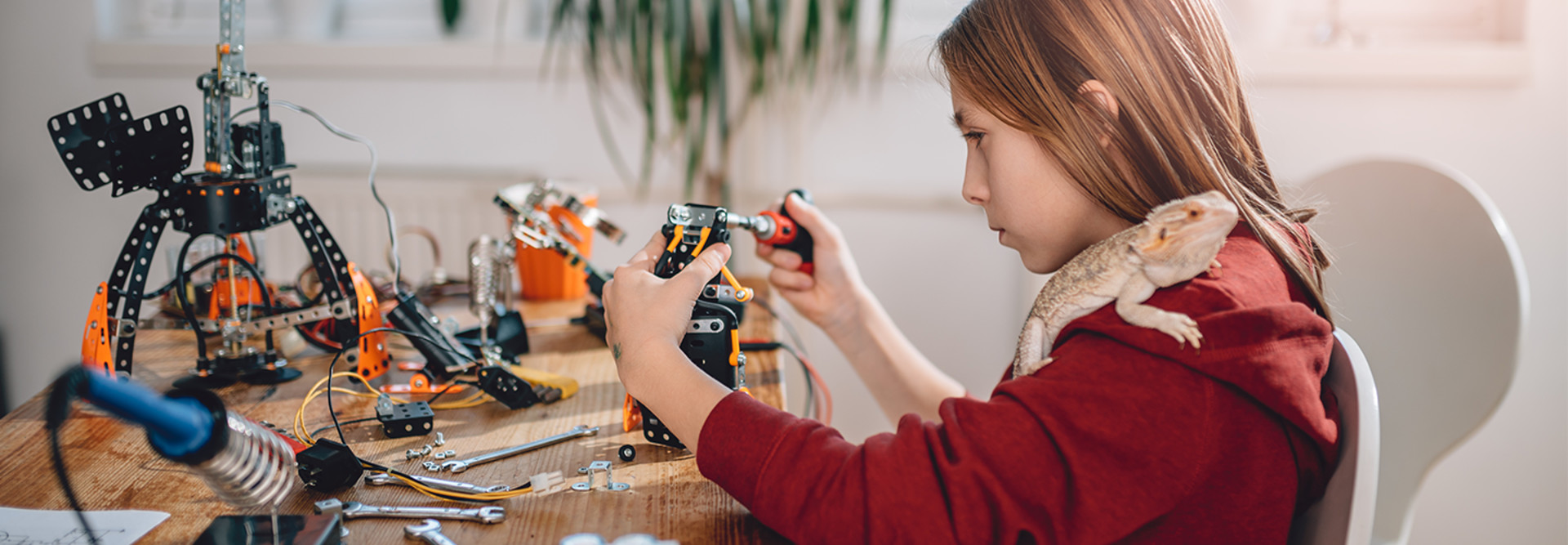For her kindergarten students, there’s Bee-Bot, a bee-shaped toy with directional arrows that kids use to control its motion. First graders get to explore the KinderLab Robotics KIBO robot kit, second graders use LEGO WeDo construction sets, and in third grade, students learn Wonder Workshop’s Dash and Dot.
For grades four and five, it’s littleBits, a kit with modular electronics pieces that snap together to form different machines, which can be programmed to follow instructions.
“By the time they reach fifth grade, they should be ready to start experimenting with more sophisticated programming languages,” says Hughes. “The goal is to get them to understand how the technology can solve real-world problems.”
Hughes, who initially funded the program with a grant from Massachusetts Computer Using Educators (MassCUE) in 2016, has gradually added enough devices so that no more than three kids have to share one at any time.
“Hands-on experience is very important,” she says. “Everyone needs to be heard and to participate. And having students work in groups of two or three encourages collaboration, a critical skill in preparing for today’s workforce.”
Robots Give New Ways to Teach Persistence, Problem-Solving
At Hoboken Charter School, a K–12 program in northern New Jersey, students can choose from a range of educational robotic kits, including Dash and Dot, LEGO Mindstorms and littleBits.
“In middle school, we primarily use littleBits to teach engineering,” says Chris Kunkel, a math teacher and STEM coordinator. “They’re great for prototyping. We give the kids design challenges they have to complete using littleBits and other materials. We also use littleBits Code Kit, which is like a programmable mini microcomputer.”
Kunkel also coaches the school’s robotics team, Roboken, which was recently a division finalist at a state robotics contest.
The school participates in the For Inspiration and Recognition of Science and Technology (FIRST) Tech Challenge, a global competition for which middle and high school students build robots and program them to compete head to head. (Connecticut, Minnesota, New Jersey and Texas all recognize robotics as an official extracurricular high school sport, according to FIRST.)
As with many schools, the biggest challenge at Hoboken Charter School is getting enough robots for all the students who want one.
“We don’t have an infinite number of robot kits,” says Kunkel. “Figuring out ways that every kid can be hands-on touching a robot is hard when you have five or six robots and 20-something kids in the class. You want to make sure every kid is getting a quality experience while reaching as many of them as possible.”
That investment can pay huge dividends. Aside from being an exciting introduction to science and technology, working with robots can reach students who might otherwise struggle in traditional classroom settings, says Kunkel.
“As a math teacher, I often see students who have a bit of a closed mindset,” he says. “If they don’t immediately get a problem, they throw up their hands and say, ‘This is too hard for me.’ But when they’re doing the engineering stuff, you almost never see that. They try, and try again, and try a third time until they get the robot to do whatever it is they want it to do.”









